Angling Artist: Steve Cote
A former corrections officer turned pyrographer, Steve Cote of Connecticut is etching his way toward a new career in marine and nautical-themed art.
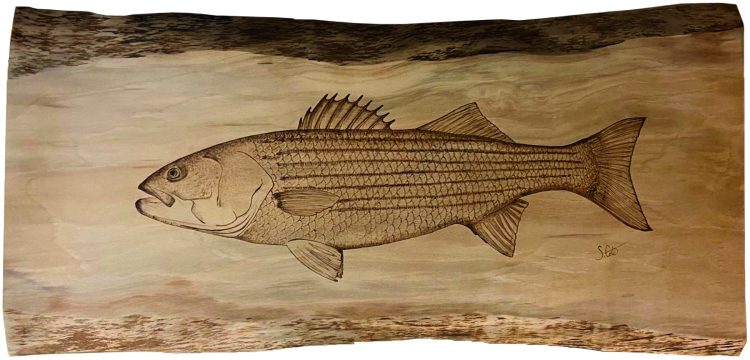
“Nautical pyrography” looks as unique as it sounds. The term pyrography roughly translates to “writing with fire.” Most of today’s pyrography is done on a wood canvas with a controlled heating tool, like the $8 wood-burning pen that Steve Cote spontaneously bought at his local hardware store five years ago. The former corrections officer had seen this style of art only on social media, but his small, impromptu purchase allowed him to enter a niche where his past woodworking skills evolved into creative expression.
When Steve left a 20-year career as a corrections officer, he revisited woodworking, a trade he developed while framing houses with his father beginning at age 14. Not only was woodwork familiar, the act of constructing and refining a simple piece of it into a polished, finished product reminded him of the 19 years spent working alongside his father.
Cote began by building cabinets and shelving units, but his interest waned because he felt his work lacked creative expression. Then, in 2018, while scanning the walls of a hardware store for a biscuit joiner—a notching tool used by woodworkers—Cote discovered that surprisingly inexpensive wood-burning pen. He recalled his knack for drawing as a child, and with this new tool, he began creating side projects for friends and family. His first sale was a small coffee-station sign that was purchased by a friend of his wife. The wood-burning pen allowed him to inscribe lettering and imagery, as well as shade and color his work in a way that added dimension and depth to each piece.
By word of mouth, demand for Cote’s pyrography pieces grew as he fulfilled requests for pet portraits, farm animals, landscapes, and life snapshots. His body of work drastically expanded when he experimented with nautical themes and marine life.
Cote’s sons, Nathan and Nick, were fascinated by sea life, which inspired him to burn an octopus as his first underwater subject. Soon after publicizing his octopus and lobster burns, Cote was commissioned to burn a few striped bass and then a pollock. His focus quickly narrowed to fish, boats, and rustic depictions of New England coastlines, launching his young pyrography career into unexplored territory.
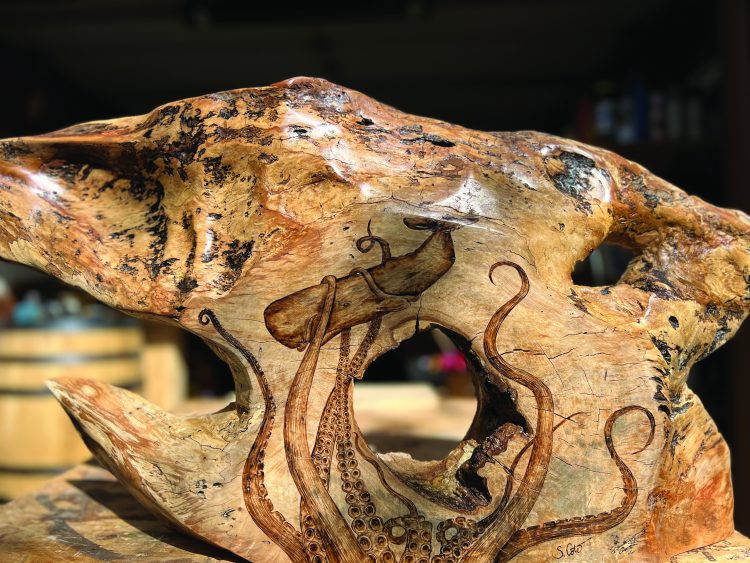
Although he doesn’t consider himself a diehard fisherman, Cote enjoys creating nautical pyrography due to the acute attention to detail these pieces require. Like fishing, etching and burning markings into wood leaves little room for error; it is an immersive and focused process that requires patience and persistence to execute. A wood-burning pen allows Cote to attain a level of detail that even laser-engraved pyrography cannot achieve. It is because of the dynamic nature of fish—from their iridescent colors to the shape and size of each individual scale—that Cote finds closely detailing a striper’s stripes or a trout’s spots to be so rewarding.
However, it is not only the subject of each piece that exudes a comforting nautical appeal. The wood canvas is equally as important to the finished product. Cote uses raw wood for both aesthetic and practical purposes; the raw wood carries with it an ambiance, and if the wood was treated, he would risk inhaling harmful fumes during the burning process.
His preferred woods, curly and spalted maple, cherrywood, and black walnut, come from local suppliers like Parkerville Wood Products and Summit Atelier. He also reliably receives discarded bourbon and wine barrels supplied to him by Connecticut’s Litchfield Distillery and Chamard Vineyards. The barrels allow him to personalize a locally-sourced, recycled, high-quality canvas for his customers which, when left intact, only furthers the coastal aura of his completed work.
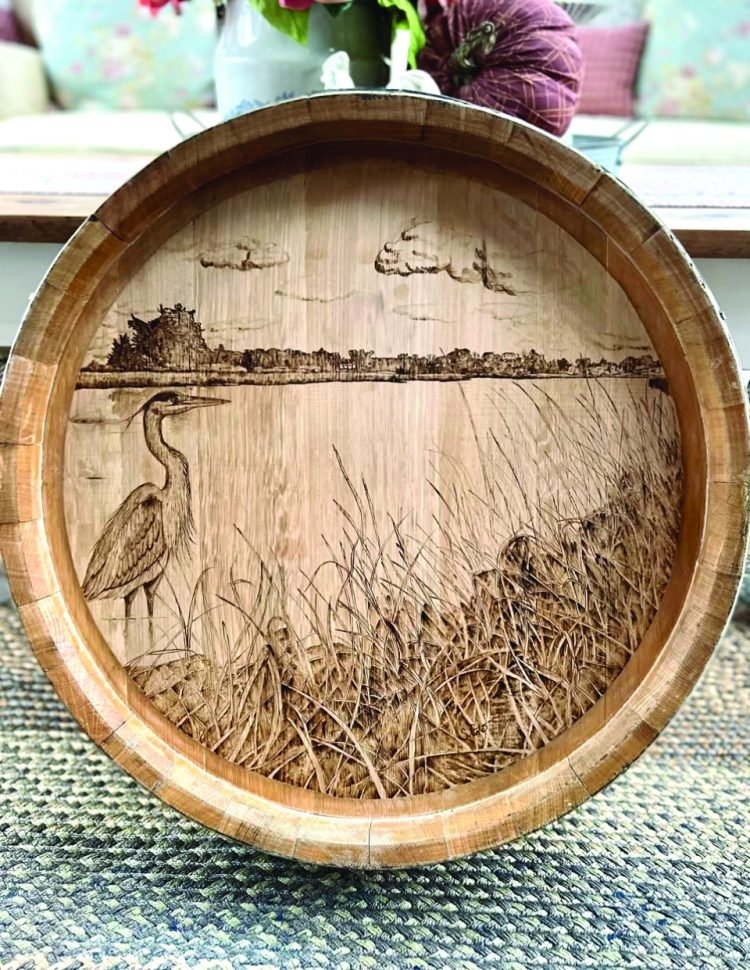
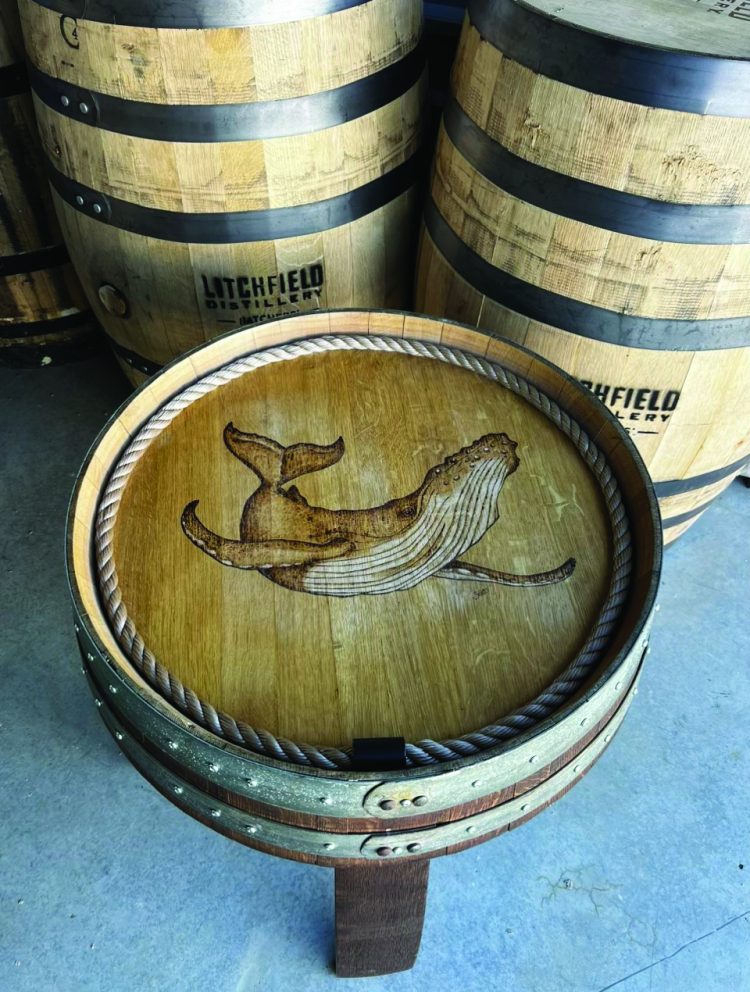
Cote’s process begins with a sketched outline of the subject in pencil to eliminate any chance of mistakes during the burning process. With the wood-burning pen plugged in and heating, he chips away at the larger features before fine-tuning details like the eye of a fish. Throughout the burning process, he adjusts the temperature of the pen to shade each piece. The pen’s high temperature settings are used for burning dark, shaded areas, while lower heat settings are required for areas with less color and a lighter texture.
Most of his work is colorless, but for something like a burning of a brook trout, Cote occasionally uses Prisma colored pencils to add texture and tone that breathes life into the fish. Some pyrographers use acrylic paint to accentuate the existing highlights and shadows within the burns, and Cote hopes to dabble with them in the near future. He finishes each work with a spray coat of UV acrylic to limit fading over time, and tops it off with a water-based spar urethane to protect from the elements. If a piece is exposed to direct sunlight, the burn will slowly fade, which is why most of his work is tailored toward indoor settings.
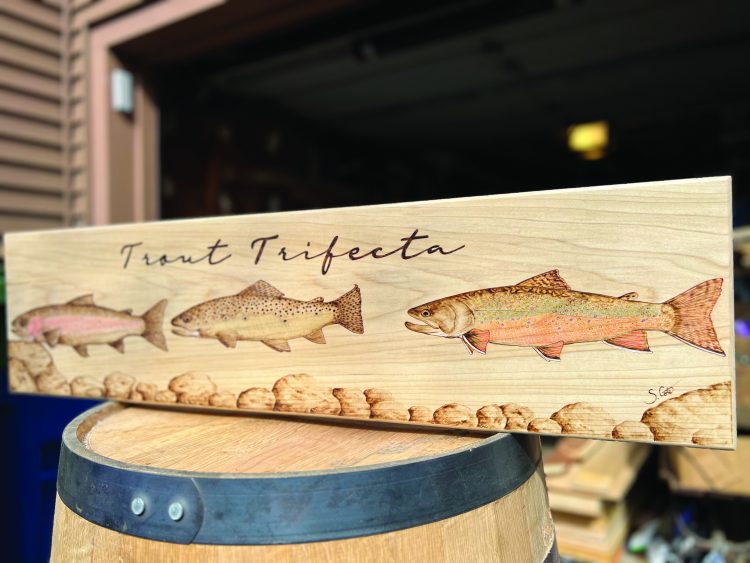
Today, Cote does live woodburning at fishing shows and boating expos, where he grabs the attention of passersby with small smoke signals from his demonstrations. Cote did 28 shows last year and, eventually, he’d like to expand into galleries across Connecticut and southern New England. He currently works out of his garage workshop, but is planning to convert his basement into a full-blown art studio where he can more comfortably create and store his work.
Cote hopes to continue burning marine life and coastal scenes that have value and meaning to the receiver. The time and effort he puts into each piece is visible in the finished product, and out of curiosity, I asked him to estimate how long the average burn takes him to complete. He chuckled and responded, “There is no average burn.”
Instagram: @cotecustomsllc
Leave a Reply